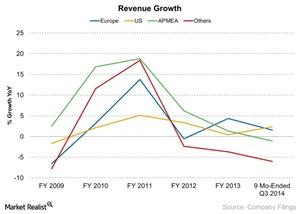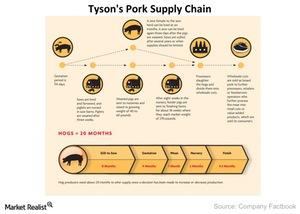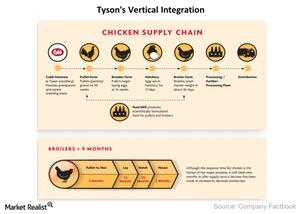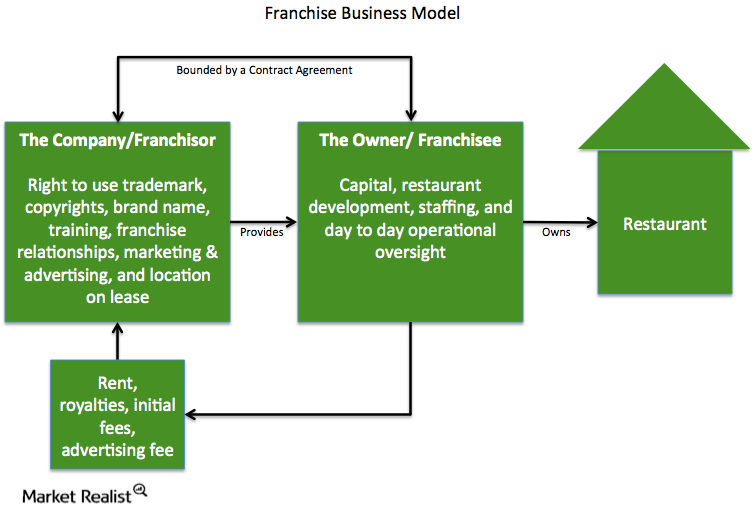
Adam Jones
I have been writing for Market Realist since 2014. I currently cover the cannabis sector, and I was drawn to the cannabis industry almost two years ago, when it was just emerging. I was fascinated by the variety of applications this single plant can have.
In addition, I like to explore different industries and am particularly interested in discovering good stocks. In the past, I've also covered the agricultural fertilizer and restaurant sectors.
When I'm not writing for Market Realist, I love reading books based on real-life events. I also enjoy reading biographies of people who have inspired the world in some way.
Disclosure: I am in full compliance with all ethics and other policies for Market Realist research analysts. I am not invested in securities that I cover on Market Realist.
More From Adam Jones

McDonald’s Revenues: 5-Year Growth Slips
McDonald’s revenues in all four regions have shown a weakness for most parts over the past two years. Why are McDonald’s sales slumping?
Tyson Foods Pork Biz In The Top Three
The Tyson Foods Pork segment processes live hogs into primal, sub-primal cuts, case-ready pork ready to be sold at retail stores, and fully cooked products.
Vertical Integration Keeps Tyson Foods On Top Of Chicken Market
Vertical integration involves a single company owning and controlling all the various stages in the production chain.
Tyson Foods Revenue Segments
Tyson Foods revenue is reported in five segments: Beef, Chicken, Pork, Processed Foods, and International. The Beef segment accounted for 43% of revenues.
Tyson Foods Commands 24% Of The Beef Market
According to Cattle Buyers Weekly, in 2014, four producers controlled 75% of the market share. Tyson Foods controls 24% of the beef market.Company & Industry Overviews The successful franchise restaurant model
The benefits of the franchise model include the opportunity for the company to grow faster because the franchisee provides the capital for making the restaurant ready for operation, and the franchisor faces lower risk if the store underperforms.Company & Industry Overviews Unit growth equally important for restaurants as same-store sales
Restaurants seek revenue growth in a variety of ways, but after exhausting all options, restaurants pursue a unit-growth strategy to capitalize on these opportunities.Company & Industry Overviews Restaurants add dayparts to increase sales
By opening restaurants for different dayparts such as breakfast, afternoon snacks, or late-night snacks, restaurants believe they will sell more products throughout the day and improve same-store sales.Company & Industry Overviews What drives restaurant same-store sales?
Same-store sales are driven by two factors: the number of customers walking into the stores and the average amount or average check those customers pay for an order.
Product innovation is Starbucks’ primary focus
Starbucks’ (SBUX) management states that product innovation will be its primary focus as it maintains a lesser focus on its coffee business.Company & Industry Overviews Know about same-store sales to understand restaurants
The two most important drivers of revenue in a restaurant business are same-store sales and unit growth. Same-store sales growth measures the growth at existing stores or locations over a period of time.Company & Industry Overviews Why Pilgrim’s Pride filed for bankruptcy
The primary reason why Pilgrim’s Pride filed for Chapter 11 bankruptcy was the burden of total debts in the amount of $1.9 billion.Company & Industry Overviews Pilgrim’s Pride Corporation’s three customer categories
Pilgrim’s customer base is spread across 100 countries, including the US and Mexico, which together contributed ~92% of the company’s revenues as of 2013 year-end.Company & Industry Overviews The nature of full-service restaurants
Full-service restaurants make up 44% of the market share in the United States. Full-service restaurants usually serve breakfast, lunch, and dinner.Company & Industry Overviews What is a company-operated restaurant model?
In a company-owned restaurant, the company takes ownership of the operation at the restaurant location. The company uses its own financial resources to get the location ready for business.Company & Industry Overviews What is a limited-service restaurant?
Limited-service restaurants can be classified into fast food or quick service, fast-casual restaurants, pizza restaurants, and cafés.Consumer Why Burger King’s restaurant visit program is so important
Burger King (BKW) opened a net of 131 new restaurants in the second quarter, making for a total net new restaurant count of 682 restaurants in the past 12 months.Consumer Must-know: Starbucks’ key value metrics—same-store sales
Same-store sales are one of the important drivers in the restaurant industry. Same-store sales directly drives the revenues. It measures the percentage change in the revenues generated by existing restaurant locations over the same period last year.Consumer Must-know: Key metrics in McDonalds’ quarterly earnings
McDonald’s reported flat global comparable sales and negative comparable guest count for 2Q14, which is concerning from a long-term income growth perspective.Consumer Why marketing and advertising are so important for restaurants
Mainstream channels of marketing—like radio, TV, and print ads—are still common. But many restaurant chains have also used social media to increase their brand presence.Consumer Important pros and cons of the company-operated restaurant model
In the last part of this series, we looked at the franchise model. Let’s now take a look at the company-operated restaurant model.
Important pros and cons of the franchise restaurant model
The most common business models in the restaurant industry are for franchised and company-operated restaurants. Let’s look at the franchise model in closer detail.Consumer Overview: Assessing the restaurant industry business model
Restaurants are simple businesses. Because we have to eat every day, people often think the restaurant industry is a safe one to invest in.
